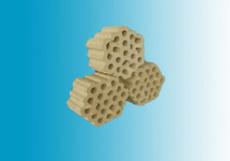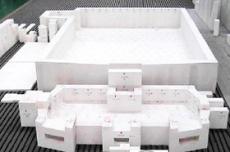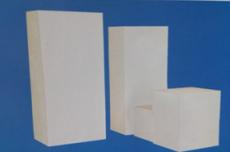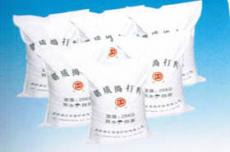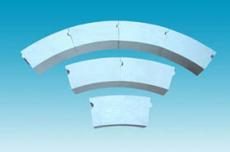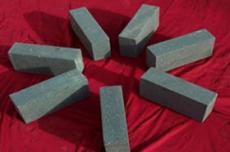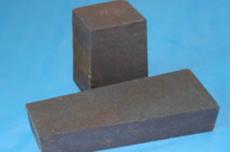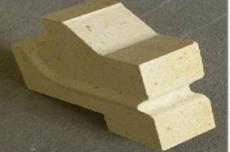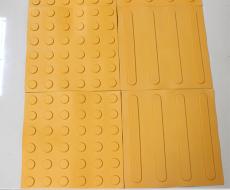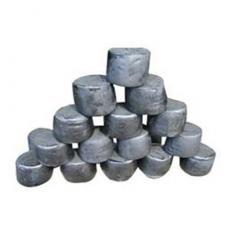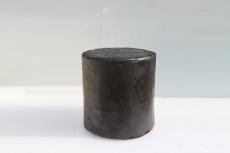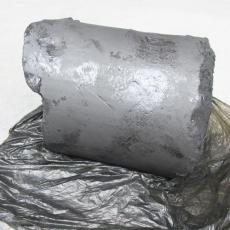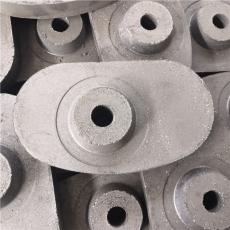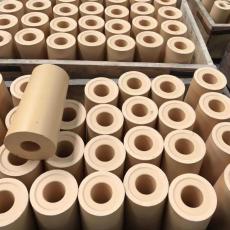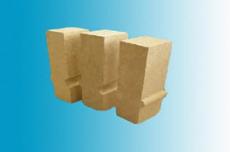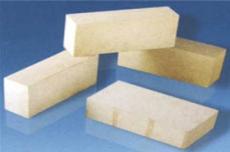
Phosphoric acid hardly reacts with acidic oxides at room temperature and does not harden, so it is not suitable as a binder for acidic refractories. Phosphoric acid reacts with amphoteric oxides (such as Al2O3) at room temperature to form a hard solid, and the reaction rate between them can be controlled, so it is particularly suitable as a binder for high-alumina refractories.
High-alumina refractories combined with phosphoric acid must be heat treated at 350~500℃.
At 586℃, the apatite-type AlPO4 is converted into the cristobalite type.
At 1065℃, the tridymite-type AlPO4 is converted into the cristobalite type.
At 1300℃, AlPO4 begins to decompose into Al2O3 and P2O5.
Changes and gelling hardening of aluminum dihydrogen phosphate Al(H2PO4)3 and corundum Al2O3 during heating: <200℃, the matrix contains only Al(H2PO4)3; amorphous substances appear in the cement at 200~600℃; aluminum phosphate dehydration ends at 600~800℃; Al(PO3)3 and Al2O3 generate cristobalite AlPO4 and P2O5 at 800~1000℃; at 1200℃, in addition to block aluminum phosphate AlPO4, there is also tridymite AlPO4, and at 1300℃ it is cristobalite. The formation of block aluminum phosphate AlPO4 makes the binder slightly loose, which slightly reduces the strength of the corundum matrix. Adding 5%~10% (w) clay can prevent the loss of strength of the corundum matrix material.
Cementation, hardening and strengthening mechanism of phosphate-bonded high-alumina refractory materials
The hardening mechanism of phosphate-bonded high-alumina refractory materials is the result of chemical reaction and adhesion bonding between phosphate binder and materials. The chemical reaction is due to the formation of hydrated aluminum dihydrogen phosphate, aluminum monohydrogen phosphate and their polymerization. When the orthophosphoric acid and phosphate in the binder are completely neutralized, water-insoluble aluminum phosphate is generated, so that the material has strength. The original or newly generated phosphates with different neutralization degrees in the binder are initially in a colloidal state in the material, and a layer of colloidal film of phosphate or orthophosphate exists on the surface of the material particles, which plays an adhesion role, but the strength is low. During the drying process, the material loses physical water and part of the chemically bound water due to heat, which increases the concentration of phosphate. At the same time, during the heating process, phosphate reacts with oxides, and aluminum dihydrogen phosphate is converted into aluminum monohydrogen phosphate, so that the material is converted from adhesion to chemical action. Heating helps to produce new compounds in the binder, also improves the adhesion performance, and the colloidal phosphate is converted into a crystalline one, so the strength of the material is improved. As the heating temperature increases, the strength further increases, which is the result of the formation of chain and ring tetrahedrons of AlPO4 and Al2O3 to form a polymeric skeleton. Phosphate-bonded high-alumina refractory materials actually have no strength loss or little loss when heated at medium temperature (300~1000℃). This is because the chemically bound water is gradually lost, and the phosphate cementation is gradually replaced by the ceramic bonding effect. Some phosphates are transformed from the crystalline state to the liquid phase at 1000~1200℃. The presence of the liquid phase in this temperature range is beneficial, as it can accelerate the low-temperature sintering of the material and improve the strength of the material.
